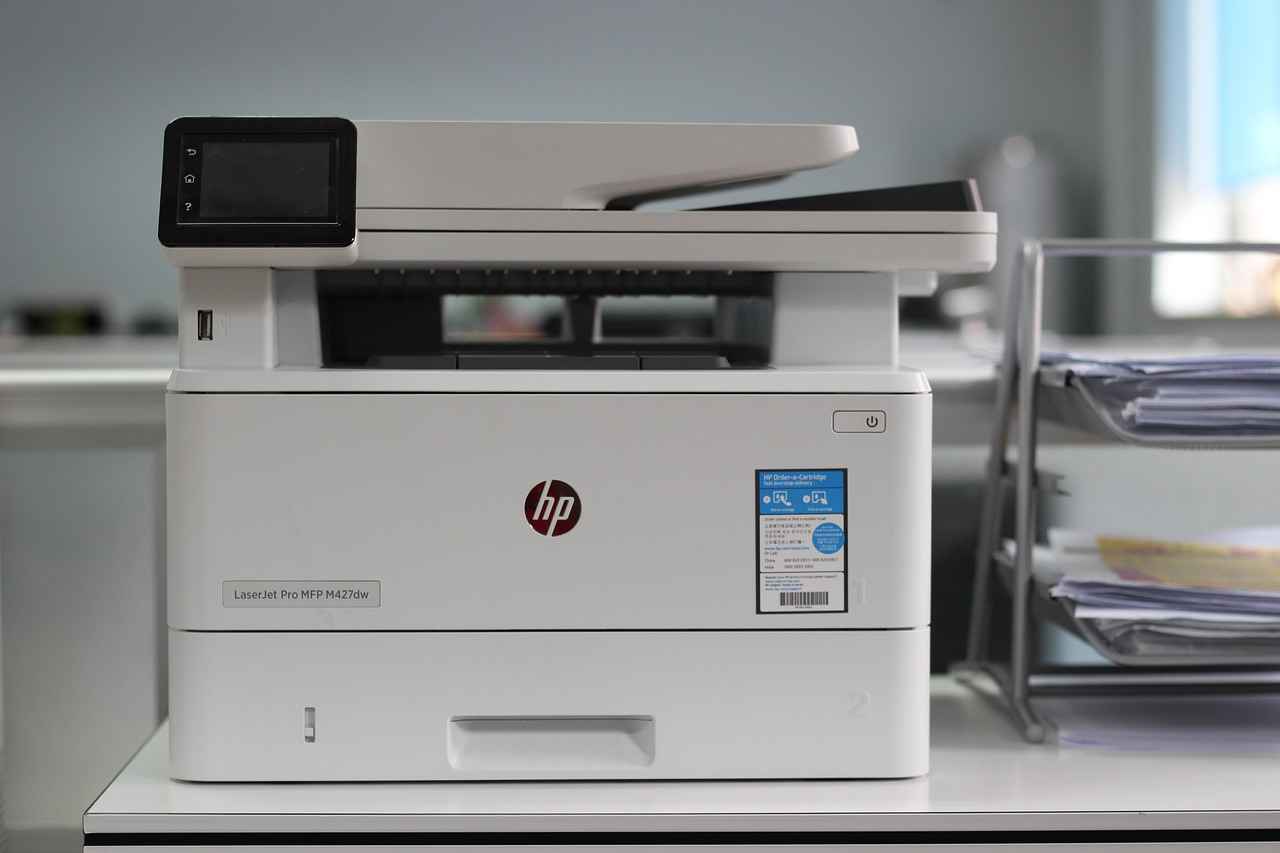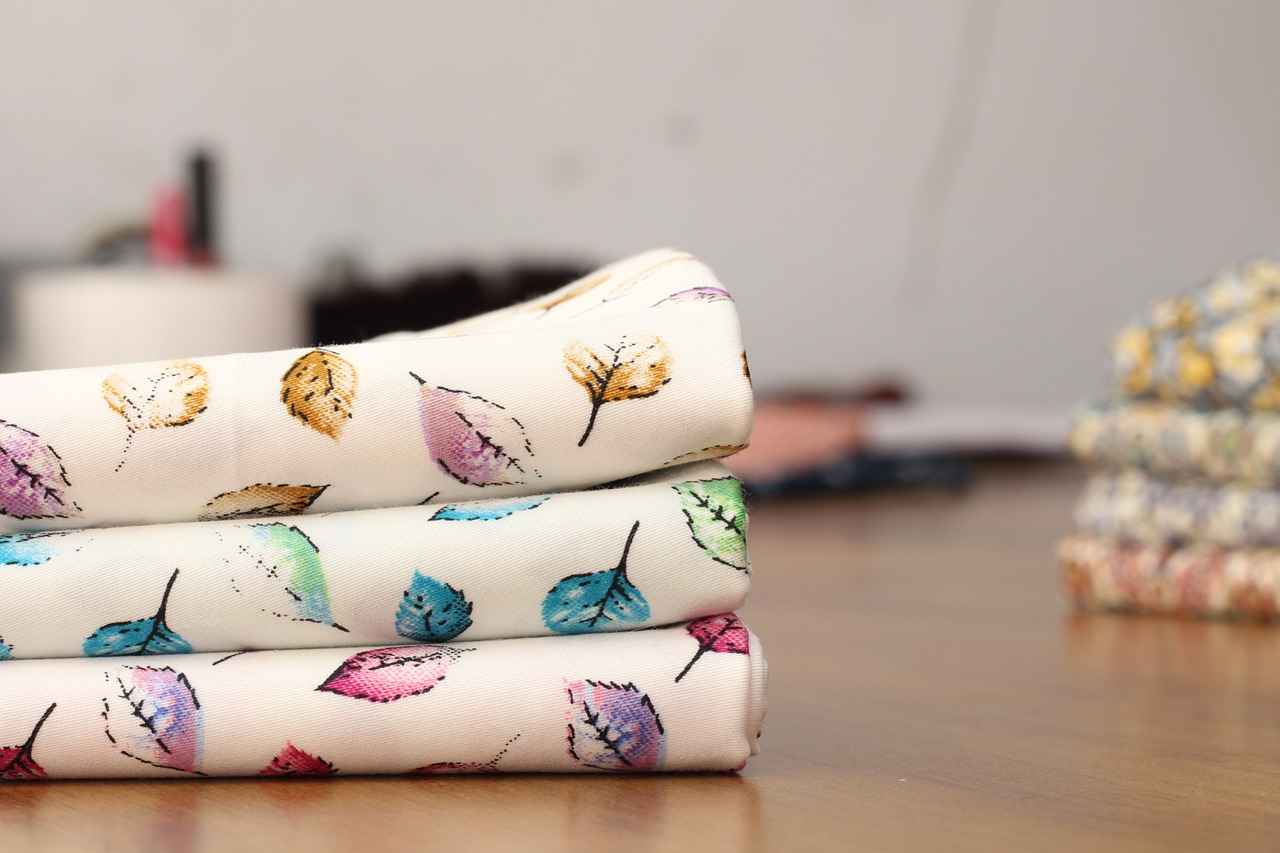This article serves as a comprehensive guide on switching colors on a Riso drum, detailing the steps, tips, and best practices for achieving vibrant prints. Understanding the intricacies of the Riso printing process is essential for anyone looking to explore this unique and creative medium.
To effectively switch colors on a Riso drum, it’s crucial to grasp the unique printing process involved. Riso printing employs a method similar to screen printing, where ink is pushed through a stencil onto paper. Each drum is designed for a specific color and must be replaced to achieve different hues. The mechanics of the machine allow for quick color changes, making it a popular choice for artists and designers aiming for vibrant prints.
Selecting the appropriate ink colors is vital for achieving the desired print outcome. Understanding color theory can significantly enhance your prints. Consider the emotional impact of colors and how they interact with each other. For instance, complementary colors can create striking contrasts, while analogous colors can produce a harmonious look. Experiment with different shades to find the perfect combination for your project.
Before switching colors, proper preparation of your Riso printer is necessary. Begin by cleaning the printer thoroughly to remove any residual ink. This step ensures that the new color does not mix with the old one, preserving the integrity of your prints. Additionally, check the machine settings and make any necessary adjustments to optimize performance.
This section outlines a detailed, step-by-step guide on how to switch colors on a Riso drum, ensuring a smooth transition between different ink colors.
- Removing the Old Drum: Carefully detach the old drum from the printer. Follow the manufacturer’s instructions to avoid damaging the machine.
- Installing the New Drum: Align the new drum properly and secure it in place. Ensure that it is locked in position to prevent any operational issues.
After installing the new drum, adjusting the print settings is vital for achieving the best results. This involves configuring the ink density and ensuring that the correct color profiles are selected. These adjustments are crucial for maintaining color accuracy and print quality.
- Calibrating Color Levels: Calibrate the color levels post-installation to ensure that the new drum produces the intended shades. This can involve running test prints and making incremental adjustments.
- Testing the Print Output: Conduct test prints to verify color accuracy. Analyze the results and make necessary tweaks to achieve the desired outcome.
Switching colors on a Riso drum can present challenges. Common issues include ink smudging, color misalignment, and inconsistent print quality. To troubleshoot these problems, ensure that the drum is installed correctly and that the printer is properly calibrated. Regular maintenance can also help mitigate these issues.
Regular maintenance is key to ensuring the longevity and performance of your Riso printer. This includes cleaning the machine after each use and checking for any wear and tear on the drums. Keeping the printer in optimal condition will enhance print quality and reduce the frequency of color switching.
After mastering the basics, exploring creative color combinations can enhance your prints. Consider experimenting with layering different colors to create unique effects. Utilizing transparency and blending techniques can also add depth to your work. Don’t hesitate to push the boundaries of color usage to discover exciting new results.
By following this comprehensive guide, you’ll be well-equipped to switch colors on a Riso drum effectively, ensuring vibrant and high-quality prints every time.

Understanding the Riso Printing Process
To effectively switch colors on a Riso drum, it’s essential to grasp the unique printing process that sets Riso apart from traditional printing methods. Riso printing is a form of digital duplicator printing that uses a stencil-based technique, making it both efficient and cost-effective for producing high-quality prints.
- Ink Application: Riso printers utilize a unique ink application method where ink is pushed through a stencil onto paper. This process involves creating a master copy on a drum, which is then used to print multiple copies. Understanding how this ink is applied is crucial when switching colors, as it ensures that the new color blends seamlessly with existing prints.
- Mechanics of the Machine: The Riso machine operates with a series of rollers and drums that work together to transfer ink onto the paper. Familiarity with these mechanics can help users troubleshoot issues that may arise during the color-switching process. For instance, knowing how to properly align the drum can prevent misprints and ensure quality output.
- Color Saturation and Layering: Riso printing allows for vibrant colors due to its ability to layer inks. When switching colors, it’s important to consider how the new color will interact with any existing layers. This can affect the overall saturation and vibrancy of the final print.
Preparation is Key
Before attempting to switch colors, thorough preparation of the Riso printer is essential. This includes cleaning the drum and ensuring that any residual ink from the previous color is completely removed. Neglecting this step can result in color contamination, leading to prints that do not meet expectations.
Understanding the Print Quality
The Riso printing process is known for its unique texture and finish. Unlike traditional printers, Riso prints have a distinct look that many artists and designers appreciate. Understanding this aspect of the printing process can help users make informed decisions when selecting colors and materials for their projects.
In summary, mastering the Riso printing process is vital for anyone looking to switch colors effectively. By understanding how ink is applied and the mechanics of the machine, users can achieve vibrant and high-quality prints that meet their creative vision.

Choosing the Right Ink Colors
Choosing the right ink colors is a fundamental aspect of the printing process, especially when working with a Riso drum. The colors you select can significantly impact the overall aesthetic and effectiveness of your printed materials. This section will delve into the intricacies of color theory, the psychology of color, and best practices for selecting inks that align with your project’s goals.
Color theory is the foundation of effective design and printing. It encompasses the relationships between colors and how they interact with one another. The primary colors—red, blue, and yellow—can be mixed to create secondary colors like green, orange, and purple. Understanding how these colors work together can help you create harmonious designs.
- Complementary Colors: These are colors that are opposite each other on the color wheel. Using complementary colors can create vibrant contrasts in your prints.
- Analogous Colors: These colors sit next to each other on the color wheel and can create serene and comfortable designs.
- Triadic Colors: This scheme involves three colors that are evenly spaced on the color wheel, providing a balanced yet vibrant palette.
Colors evoke emotions and can influence perceptions. Understanding the psychological implications of colors can guide your choices:
- Red: Often associated with passion and excitement.
- Blue: Conveys trust and calmness.
- Green: Represents nature and tranquility.
- Yellow: Evokes happiness and energy.
By selecting colors that align with the message you wish to convey, you can enhance the impact of your printed materials.
To achieve the desired print outcome, consider the following best practices:
- Test Color Swatches: Always print test swatches to see how colors appear on the chosen paper. Colors can look different when printed than they do on a screen.
- Consider Your Audience: Tailor your color choices to the preferences and expectations of your target audience. Different demographics may respond differently to color schemes.
- Match Colors to Your Brand: If you’re printing materials for a business, ensure the ink colors align with your brand identity for consistency.
Creating a color palette can streamline your selection process. Consider using tools like Adobe Color or Coolors to generate color palettes that work well together. These tools allow you to explore various color combinations and find the right inks for your project.
In conclusion, selecting the right ink colors is a multifaceted process that combines an understanding of color theory, psychology, and practical application. By following the outlined best practices, you can enhance the quality and effectiveness of your prints, ensuring that they resonate with your intended audience.

Preparing Your Riso Printer
Before diving into the vibrant world of color switching on your Riso printer, it is crucial to ensure that your machine is properly prepared. This preparation not only enhances the quality of your prints but also prolongs the life of your printer. Below are the essential steps to follow for optimal performance.
- Clean the Printer: Begin by thoroughly cleaning your Riso printer. Dust and ink residue can accumulate over time, affecting print quality. Use a soft, lint-free cloth to wipe down the exterior and interior components. Pay special attention to the ink paths and rollers, as any obstructions can lead to uneven ink distribution.
- Check Ink Levels: Before switching colors, ensure that you have sufficient ink for the new color you plan to use. Low ink levels can lead to poor print quality and can cause issues during the color switching process. Replace any low or empty ink cartridges to avoid interruptions.
- Inspect the Drum: The drum is a vital component of the Riso printing process. Inspect the current drum for any signs of wear or damage. If the drum is worn out, it may not transfer ink effectively, resulting in subpar prints. Make sure to replace it if necessary.
- Adjust Settings: Before switching colors, review and adjust your printer settings. Ensure that the paper type and print quality settings are appropriate for the new color you are about to use. This will help in achieving the best possible results.
- Run a Test Print: After cleaning and setting up, run a test print using the current color. This will help you identify if there are any existing issues with the printer before you switch colors. Pay attention to any inconsistencies in print quality or color output.
In addition to these steps, it is advisable to consult the Riso printer manual for specific cleaning and maintenance instructions tailored to your model. Regular maintenance not only ensures optimal performance but also minimizes the risk of unexpected breakdowns during crucial print jobs.
By taking the time to prepare your Riso printer properly, you set the foundation for successful color switching. This attention to detail will enable you to achieve vibrant, high-quality prints that meet your creative expectations.

Step-by-Step Guide to Switching Colors
Switching colors on a Riso drum may seem daunting, but with a structured approach, it can be a straightforward process. This step-by-step guide is designed to simplify the transition between different ink colors, ensuring that you achieve vibrant and high-quality prints with ease.
To successfully switch colors on a Riso drum, follow these detailed steps:
- Gather Necessary Tools and Materials: Before you begin, ensure you have all the required tools at hand. This includes:
- New ink drum
- Cleaning cloths
- Protective gloves
- Instruction manual for your specific Riso model
- Power Down the Printer: Safety first! Always turn off the printer and unplug it from the power source to prevent any electrical hazards while working.
- Remove the Old Drum: Carefully detach the old drum from the printer. Follow these sub-steps:
- Open the printer cover to access the drum.
- Locate the release mechanism or levers that hold the drum in place.
- Gently lift the drum out, ensuring no ink spills occur.
- Clean the Drum Area: Before installing the new drum, it’s crucial to clean the drum area. Use a cleaning cloth to wipe away any residual ink and dust, ensuring a clean workspace for the new drum.
- Install the New Drum: Align the new drum with the printer’s fittings and carefully slide it into place. Make sure it clicks securely, indicating that it is properly installed.
- Check Ink Levels: Verify that the new drum has sufficient ink for printing. Inspect the ink supply to avoid interruptions during your printing process.
- Adjust Settings on the Printer: After the new drum is installed, turn the printer back on and access the settings menu. Adjust the print settings according to the new color, including ink density and registration adjustments.
- Calibrate for Color Accuracy: Use test prints to calibrate the color output. This step is essential for ensuring that the new ink produces the desired shades. Make adjustments as necessary based on the results.
- Conduct Test Prints: Finally, perform a series of test prints to confirm the color accuracy and quality. Evaluate the prints for any inconsistencies and make further adjustments if needed.
By following this step-by-step guide, you can ensure a smooth transition when switching colors on your Riso drum. Regular practice will help you become more proficient, allowing you to focus on your creative projects with confidence.
Removing the Old Drum
Switching colors on a Riso drum is an exciting process, but it begins with the essential task of . This step is crucial for ensuring that the new color can be applied without any contamination from the previous ink. Below, we provide a detailed, step-by-step guide to safely detach the drum from the printer.
- Gather Necessary Tools: Before you start, make sure you have all the required tools at hand, including a clean cloth, gloves, and any specific tools recommended by your printer’s manufacturer. This preparation will help you work efficiently and safely.
- Power Off the Printer: Always begin by turning off the printer and unplugging it from the power source. This precaution is vital to prevent any electrical hazards and ensure your safety while working.
- Open the Printer Access Panel: Locate the access panel on your Riso printer. Most models have a simple latch or button that allows you to open the panel easily. Be gentle when opening it to avoid damaging any components.
- Remove the Ink Cartridge: Before detaching the drum, you must remove the ink cartridge. Gently pull it out, ensuring that no ink spills occur. Place it on a clean surface to avoid contamination.
- Detach the Drum: Now, locate the drum release mechanism. This may involve unscrewing a few screws or pressing a release button, depending on your printer model. Carefully lift the drum out of its housing, making sure not to touch the ink rollers directly.
- Clean the Drum Area: With the old drum removed, take a moment to clean the drum area with a soft cloth. This step is essential to remove any residual ink or debris that could affect the new drum’s performance.
- Inspect the Components: Before proceeding, inspect the removed drum and the printer components for any signs of wear or damage. This inspection can help you identify potential issues that may need addressing before installing the new drum.
By following these steps, you can safely remove the old drum from your Riso printer. This careful approach not only ensures a smooth transition to the new color but also maintains the integrity of your printing equipment. Remember, taking your time during this process is key to achieving the best results in your printing endeavors.
Installing the New Drum
Once the old drum is removed, requires precision and attention to detail. This step is crucial in ensuring that your Riso printer functions optimally and produces high-quality prints. Below, we outline the necessary steps and considerations for a successful installation.
- Gather Required Tools: Before you begin, make sure you have all the necessary tools at hand. This typically includes a clean, lint-free cloth, gloves to prevent contamination, and any specific tools recommended by the manufacturer.
- Inspect the New Drum: Carefully examine the new drum for any signs of damage or defects. Ensure that it is clean and free from dust or debris, as this can affect print quality.
- Prepare the Printer: Ensure that the printer is turned off and unplugged. This is a safety measure that prevents any electrical hazards while you work.
Next, follow these steps for the installation:
- Align the Drum: Position the new drum in front of the printer. Align it with the designated slots, ensuring that the drive gears and locking mechanisms are correctly oriented.
- Insert the Drum: Gently slide the drum into place. Be careful not to apply excessive force, as this can damage both the drum and the printer.
- Secure the Drum: Once the drum is in position, engage the locking mechanism to secure it firmly. Listen for a click sound, which indicates that the drum is locked in place.
After installation, it’s essential to perform a few checks:
- Check for Movement: Manually rotate the drum to ensure it moves freely without obstruction. This step is vital to avoid printing issues later on.
- Reconnect and Power On: Plug the printer back in and turn it on. Allow the machine to go through its initialization process, which may take a few moments.
- Run a Test Print: Finally, conduct a test print to verify that the new drum is functioning correctly. Check for color accuracy and print quality, making adjustments as necessary.
By following these detailed steps, you can ensure a smooth and efficient installation of the new color drum in your Riso printer. This not only enhances the performance of your machine but also contributes to achieving vibrant and high-quality prints.

Adjusting Print Settings
Adjusting the print settings after installing a new drum is crucial for achieving optimal print quality and color accuracy. This process ensures that your Riso printer functions effectively with the new ink, allowing you to produce vibrant and true-to-life prints. In this section, we will explore the essential adjustments you need to make and the reasons behind each setting.
- Understanding Print Settings: Before diving into specific adjustments, it’s important to understand the various print settings available on your Riso printer. These settings control aspects such as ink density, registration, and color balance, all of which contribute to the final output.
- Ink Density Adjustment: One of the first settings to consider is ink density. Adjusting this setting allows you to control how much ink is applied to the paper. Too much ink can lead to oversaturation and muddiness, while too little can result in pale prints. A good starting point is to set the density to the manufacturer’s recommended level and adjust based on test prints.
- Registration Settings: Proper registration is vital for multi-color prints. Misalignment can cause colors to appear blurry or shifted. Ensure that the registration settings are calibrated correctly, allowing for precise alignment of each color layer. This can often be done through a simple test print that checks for color overlap.
- Color Balance Calibration: Color balance is another important factor in achieving accurate prints. This involves adjusting the levels of cyan, magenta, yellow, and black (CMYK) to ensure that the colors appear as intended. Utilize color calibration tools or software to assist with this process, ensuring that your prints reflect true color representation.
- Paper Type Selection: Different paper types absorb ink differently. Selecting the correct paper type in the print settings can significantly affect the output. Whether you are using glossy, matte, or textured paper, ensure that the settings reflect your choice to achieve the best results.
- Test Printing: After making adjustments, always conduct test prints. This step is essential to evaluate the effectiveness of your settings. Print a sample design that includes various colors and gradients to see how well the adjustments hold up. Make further tweaks as necessary based on the results.
In summary, adjusting print settings after installing a new drum is not merely a routine task but a vital step towards achieving high-quality prints. By focusing on ink density, registration, color balance, and paper type, you can ensure that your Riso printer delivers stunning results every time. Taking the time to fine-tune these settings will pay off in the form of vibrant, accurate prints that meet your creative vision.
Calibrating Color Levels
Calibrating color levels is a critical step in the Riso printing process, especially after installing a new drum. This procedure ensures that the prints produced reflect the intended shades and maintain color fidelity. In this section, we will explore effective methods for color calibration that can help achieve vibrant and accurate prints.
Color calibration involves adjusting the color output of your printer to ensure that the printed colors match the original design as closely as possible. This process is essential because different drums and inks can produce varying results. By calibrating your printer, you can minimize discrepancies and enhance the overall quality of your prints.
- Calibration Software: Specialized software can help analyze and adjust color settings.
- Color Target Charts: These charts allow you to compare printed colors against standard color values.
- Colorimeter: A device that measures the color output of your printer and helps in making precise adjustments.
- Print Color Targets: Begin by printing a set of color target charts. Ensure that the printer settings are correctly configured for the new drum.
- Measure Colors: Use a colorimeter to measure the printed colors against the target values. This step is crucial for identifying any discrepancies.
- Adjust Printer Settings: Based on the measurements, adjust the printer settings in the calibration software. This may include tweaking the ink density, color balance, and other parameters.
- Reprint and Test: After making adjustments, reprint the color targets and measure again to verify that the colors are now accurate.
During the calibration process, you may encounter several challenges. One common issue is inconsistent ink distribution, which can lead to banding or uneven colors. Regularly cleaning the printer and ensuring that the ink supply is adequate can help mitigate this problem. Additionally, environmental factors such as humidity and temperature can affect color output, so it’s essential to conduct calibration in a controlled environment.
Once calibration is complete, maintaining color consistency is vital for ongoing print quality. Regularly check and recalibrate your printer, especially when changing inks or drums. Keeping a log of your calibration settings can also help in tracking changes and ensuring that your prints remain consistent over time.
In summary, calibrating color levels post-installation is a fundamental aspect of the Riso printing process. By following the outlined steps and utilizing the right tools, you can ensure that your prints achieve the desired color accuracy and vibrancy. This attention to detail not only enhances the quality of your work but also builds trust with clients who rely on precise color reproduction.
Testing the Print Output
Testing the print output after color adjustment is a critical step in the Riso printing process. This phase ensures that the colors produced align with your expectations and the design specifications. In this section, we will explore how to conduct effective test prints, verify color accuracy, and make any necessary adjustments to achieve the desired results.
- Why Test Prints Matter: Test prints serve as a tangible representation of your color settings. They help identify discrepancies between the intended colors and what is actually printed. This process is essential for achieving professional-quality results.
- Preparing for Test Prints: Before initiating the test print, ensure that your printer is properly set up. This includes confirming that the new drum is installed correctly, the ink is adequately loaded, and the machine is clean. A well-prepared printer will yield more accurate test results.
- Conducting the Test Print: Start by printing a sample design that includes a range of colors. This should ideally encompass the full spectrum of hues you intend to use in your project. Pay attention to the output, especially in areas where colors blend or transition.
Evaluating the Results
Once the test print is complete, it’s time to evaluate the results. Look closely at the printed colors and compare them to your original design. Here are some key aspects to consider:
- Color Consistency: Check if the colors are consistent across different areas of the print. Variations might indicate issues with ink distribution or drum alignment.
- Brightness and Saturation: Assess whether the colors are as vibrant as expected. If they appear dull or washed out, adjustments may be needed in the ink settings or the printing process.
- Registration and Alignment: Ensure that the colors are properly aligned. Misalignment can cause colors to appear blurry or create unwanted shadows.
Making Adjustments
If the test print does not meet your expectations, adjustments are necessary. Here’s how to proceed:
- Color Calibration: Utilize the calibration settings on your printer to fine-tune the color output. This may involve adjusting the ink levels or modifying the color profiles.
- Re-Test: After making adjustments, conduct another test print. Repeat this process as needed until the colors align with your vision.
- Document Your Settings: Keep a record of the settings that yield the best results. This documentation will be invaluable for future projects.
In conclusion, testing the print output is a fundamental aspect of the Riso printing process. By carefully evaluating your test prints and making necessary adjustments, you can ensure that the final product meets your creative expectations. This attention to detail not only enhances the quality of your prints but also boosts your confidence in using the Riso printing technology effectively.

Common Issues When Switching Colors
Switching colors on a Riso drum can be an exciting yet challenging task for printmakers. As you delve into the world of vibrant prints, understanding the common issues that may arise during this process is crucial. This section aims to identify these challenges and provide effective troubleshooting tips to help you achieve seamless color transitions.
When changing colors on a Riso drum, several issues can surface, impacting the quality of your prints. Here are some of the most frequent problems encountered:
- Ink Contamination: One of the primary challenges is the risk of ink contamination. Residual ink from the previous color can mix with the new ink, resulting in unexpected shades. To prevent this, ensure that the drum is thoroughly cleaned before installing the new color.
- Incorrect Drum Installation: Improper installation of the drum can lead to alignment issues, causing uneven prints. Always follow the manufacturer’s guidelines for attaching the drum to ensure it is securely in place.
- Color Calibration Issues: After switching colors, the new ink may not match the expected output. This can occur if color calibration is not performed correctly. Utilize the printer’s calibration settings to adjust the color levels accurately.
- Print Quality Problems: Sometimes, the print quality may decline after a color switch. This could be due to factors such as insufficient ink supply or worn-out screens. Regular maintenance and monitoring of ink levels can help mitigate these issues.
- Paper Jamming: Changing colors can occasionally lead to paper jams, particularly if the printer settings are not adjusted for the new ink type. Always check the printer settings and use compatible paper to avoid this problem.
To resolve these issues, consider the following troubleshooting tips:
- Thorough Cleaning: Before switching colors, clean the drum and any associated components meticulously to remove any remnants of the previous ink.
- Follow Installation Protocols: Adhere strictly to the installation instructions provided by the manufacturer. This ensures that the drum is correctly aligned and secured.
- Perform Regular Calibration: After installing the new drum, conduct a color calibration to ensure the new ink produces the desired hues. This step is vital for maintaining print quality.
- Monitor Ink Levels: Regularly check ink levels and replace any depleted cartridges to ensure consistent print quality.
- Adjust Printer Settings: Before printing, adjust the printer settings according to the specifications of the new ink to prevent paper jams and ensure smooth operation.
By being aware of these common issues and implementing the suggested solutions, you can enhance your experience with color switching on a Riso drum. This proactive approach not only improves print quality but also fosters creativity in your printing projects.

Maintaining Your Riso Printer
Regular maintenance is essential for ensuring the longevity and performance of your Riso printer. A well-maintained machine not only produces vibrant prints but also minimizes the risk of mechanical issues. This section outlines the best practices for maintaining your printer after color switching, ensuring optimal performance and print quality.
After switching colors, the first step in maintenance is to clean the printer thoroughly. Ink residues can accumulate in various parts of the machine, affecting print quality and leading to clogs. Use a soft cloth and appropriate cleaning solution to wipe down the exterior and interior components. Pay special attention to the ink paths and rollers, as these are critical for smooth operation.
Next, it is important to check the ink levels. After a color switch, you should verify that the new ink is adequately supplied and that there are no air bubbles in the ink tubes. This can be done by running a test print or using the printer’s diagnostic tools. If ink levels are low, replace the cartridges promptly to avoid interruptions during printing.
Additionally, calibrating the printer after color switching is vital. This involves adjusting the color settings to ensure that the new ink produces the desired shades. Use the printer’s calibration settings to fine-tune color levels, and consider running a few test prints to confirm the accuracy of the adjustments.
Another critical aspect of maintenance is to inspect the drum. After switching colors, the drum may require cleaning to remove any residual ink. Carefully follow the manufacturer’s guidelines for cleaning the drum to prevent damage. Regular inspection can also help identify wear and tear, allowing for timely replacements.
It is also advisable to maintain a consistent printing schedule. Regular use of the printer helps keep the ink flowing and prevents clogs. If the printer will not be used for an extended period, consider running a maintenance cycle or printing a test page to keep the ink moving.
Finally, maintaining a clean environment around your Riso printer can significantly impact its performance. Dust and debris can enter the machine, causing malfunctions. Keep the area around the printer tidy and consider using dust covers when the printer is not in use.
In conclusion, following these maintenance practices after color switching can greatly enhance the performance and lifespan of your Riso printer. Regular cleaning, calibration, and inspections, along with a consistent printing schedule and a clean environment, are the keys to achieving high-quality prints consistently.

Exploring Creative Color Combinations
Exploring creative color combinations can significantly elevate your Riso prints, transforming them from simple designs into vibrant works of art. Once you have a solid grasp of the basics, diving into the world of color mixing opens up endless possibilities for your projects. This section will explore various techniques and inspirations for mixing colors effectively.
First, it’s essential to understand the fundamentals of color theory. Familiarize yourself with the color wheel, which consists of primary, secondary, and tertiary colors. By understanding how colors interact, you can create stunning combinations that resonate with your intended message or aesthetic. For instance, complementary colors—those opposite each other on the color wheel—can create striking contrasts, while analogous colors—those next to each other—can yield harmonious results.
When mixing colors for your Riso prints, consider using a limited color palette. This technique can enhance the visual impact of your work by maintaining a cohesive look. Choose two to four colors that complement each other well and experiment with different proportions. For example, using a dominant color with one or two accent colors can create a balanced and eye-catching design.
Another effective method is to explore layering techniques. By printing one color over another, you can achieve unique shades and textures that add depth to your prints. For instance, printing a translucent layer of blue over a yellow base can create a vibrant green, while also allowing the underlying color to influence the final outcome. Experimenting with different opacity levels can yield fascinating results.
Additionally, consider the emotional impact of colors. Different colors evoke various feelings and responses. For example, warm colors like reds and oranges can create a sense of energy and excitement, while cool colors like blues and greens often convey calmness and tranquility. By strategically selecting colors based on their emotional connotations, you can enhance the narrative of your prints.
Don’t hesitate to seek inspiration from various sources. Nature, art, and even fashion can provide ideas for innovative color combinations. Keep a color journal where you collect swatches, images, and notes about color pairings that resonate with you. This can serve as a valuable reference when working on future projects.
In conclusion, exploring creative color combinations is a rewarding aspect of the Riso printing process. By understanding color theory, experimenting with limited palettes, layering techniques, and emotional impacts, you can elevate your prints to new heights. Embrace the journey of color exploration, and let your creativity shine through your work!

Conclusion: Mastering Color Switching on Riso Drums
Switching colors on a Riso drum is a vital skill for anyone looking to enhance their printing capabilities. This guide will help you navigate the intricacies of this process, allowing you to achieve stunning and vibrant prints consistently. By understanding the Riso printing process and following the outlined steps, you will be well-prepared to make effective color transitions.
The Riso printing process is unique and differs significantly from traditional printing methods. It utilizes a stencil-based technique where ink is forced through a master, creating sharp, vibrant images. Understanding how ink is applied and the mechanics of the machine is crucial. The Riso drum operates by rotating the master, allowing ink to transfer onto the paper in a quick and efficient manner. This method not only enables the use of vibrant colors but also ensures that prints are produced at a rapid pace.
Selecting appropriate ink colors is essential for achieving your desired print outcome. Familiarity with color theory can greatly enhance your choices. For instance, complementary colors can create striking contrasts, while analogous colors can produce harmonious designs. Always consider the emotional response different colors evoke and how they align with your project’s goals. Testing color combinations on smaller prints can help you visualize the final result before committing to larger runs.
Before you switch colors, preparing your Riso printer is critical. Start by cleaning the machine thoroughly to remove any residual ink that could affect the new color. Ensure that the printer settings are optimized for the type of print you are producing. This preparation not only prolongs the lifespan of your printer but also enhances print quality.
Switching colors on a Riso drum involves several detailed steps:
- Removing the Old Drum: Begin by carefully detaching the old drum from the printer. Ensure that you follow safety protocols to avoid damaging the machine.
- Installing the New Drum: Align the new drum correctly and secure it in place. Precision is key to ensuring that the drum operates smoothly.
After installing the new drum, adjusting the print settings is essential for achieving optimal results. This includes selecting the correct ink density and adjusting the speed settings. Proper adjustments will ensure that the colors are vibrant and true to your expectations.
Once the new drum is installed, calibrating color levels is crucial. This involves running test prints to ensure that the colors are accurate and vibrant. Adjust the settings as necessary to achieve the desired color output. Calibration helps to maintain consistency across multiple prints, which is especially important for larger projects.
Conducting test prints is an integral part of the color switching process. This step allows you to verify color accuracy and make any necessary adjustments before proceeding with the final prints. Pay attention to any discrepancies and adjust your settings accordingly to ensure the best possible results.
Switching colors can sometimes present challenges, such as ink smudging or inconsistent color output. Familiarize yourself with common issues and their solutions. For example, if you experience smudging, it may be due to incorrect drying times or settings that need adjustment. Troubleshooting these problems promptly can save you time and resources.
Regular maintenance is essential for the longevity of your Riso printer. After switching colors, ensure that you clean the machine and check for any wear and tear. Establishing a maintenance routine will help you avoid potential issues and keep your printer running smoothly.
Once you are comfortable with the basics of color switching, consider exploring creative color combinations. Mixing colors can lead to unique and innovative prints that stand out. Experiment with layering different inks and using transparency effects to create depth in your designs.
Frequently Asked Questions
- What is a Riso drum and how does it work?
A Riso drum is a component of a Riso printer that uses a unique printing process, where ink is pushed through a stencil onto paper. It’s known for producing vibrant, high-quality prints quickly and efficiently.
- How do I choose the right ink colors for my project?
Selecting the right ink colors involves understanding color theory and considering the mood or message you want to convey. Think about complementary colors and how they interact to create the desired visual impact.
- What steps should I follow to switch colors on the Riso drum?
To switch colors, first, remove the old drum carefully. Then, install the new drum, adjust the print settings, calibrate color levels, and finally test the print output to ensure everything is working perfectly.
- What common issues might I encounter when switching colors?
Common issues include misalignment of the drum, inconsistent ink flow, or color discrepancies. Most of these can be resolved by double-checking the installation and recalibrating the printer settings.
- How can I maintain my Riso printer after switching colors?
Regular maintenance involves cleaning the printer, checking for ink residue, and ensuring that the drum and other components are in good condition. This helps prolong the life of your printer and ensures optimal performance.


